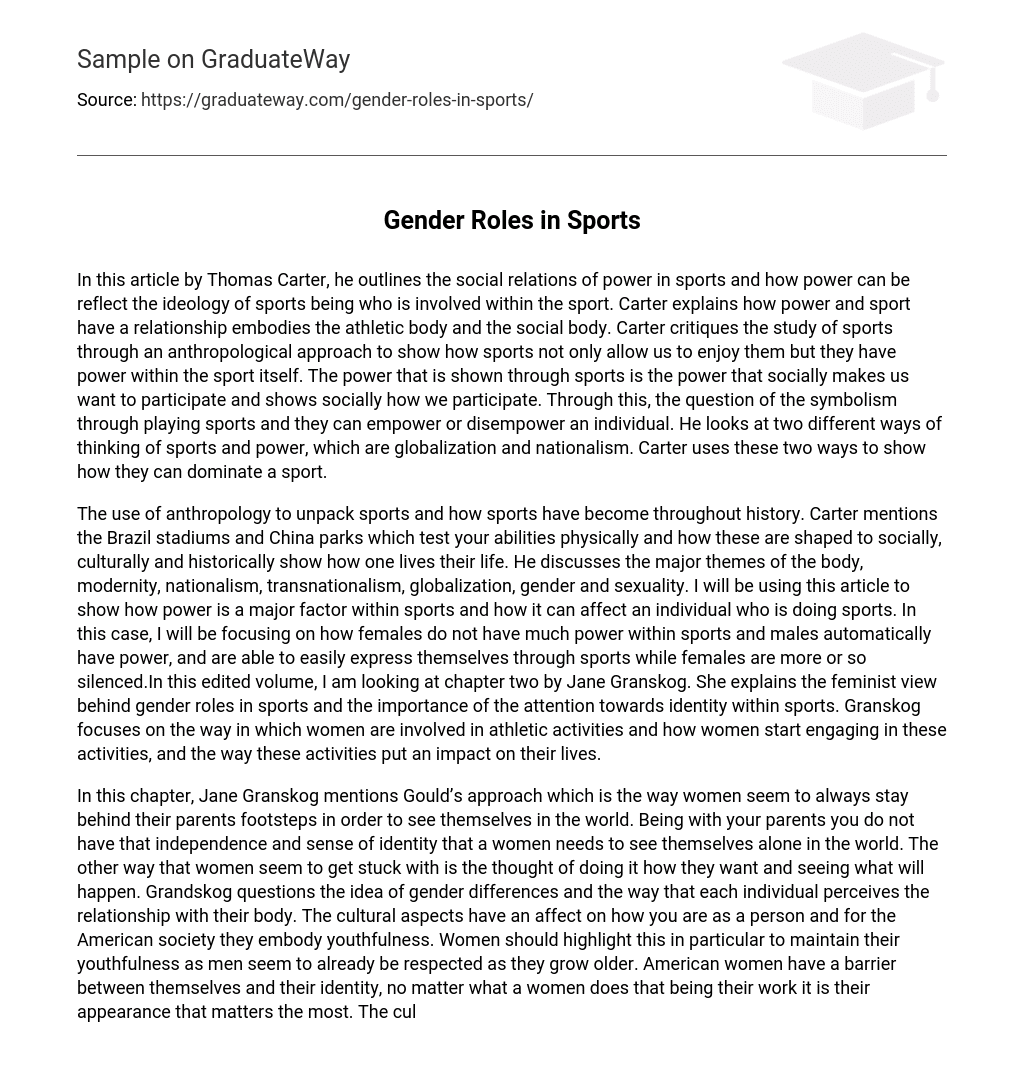In this article by Thomas Carter, he outlines the social relations of power in sports and how power can be reflect the ideology of sports being who is involved within the sport. Carter explains how power and sport have a relationship embodies the athletic body and the social body. Carter critiques the study of sports through an anthropological approach to show how sports not only allow us to enjoy them but they have power within the sport itself. The power that is shown through sports is the power that socially makes us want to participate and shows socially how we participate. Through this, the question of the symbolism through playing sports and they can empower or disempower an individual. He looks at two different ways of thinking of sports and power, which are globalization and nationalism. Carter uses these two ways to show how they can dominate a sport.
The use of anthropology to unpack sports and how sports have become throughout history. Carter mentions the Brazil stadiums and China parks which test your abilities physically and how these are shaped to socially, culturally and historically show how one lives their life. He discusses the major themes of the body, modernity, nationalism, transnationalism, globalization, gender and sexuality. I will be using this article to show how power is a major factor within sports and how it can affect an individual who is doing sports. In this case, I will be focusing on how females do not have much power within sports and males automatically have power, and are able to easily express themselves through sports while females are more or so silenced.In this edited volume, I am looking at chapter two by Jane Granskog. She explains the feminist view behind gender roles in sports and the importance of the attention towards identity within sports. Granskog focuses on the way in which women are involved in athletic activities and how women start engaging in these activities, and the way these activities put an impact on their lives.
In this chapter, Jane Granskog mentions Gould’s approach which is the way women seem to always stay behind their parents footsteps in order to see themselves in the world. Being with your parents you do not have that independence and sense of identity that a women needs to see themselves alone in the world. The other way that women seem to get stuck with is the thought of doing it how they want and seeing what will happen. Grandskog questions the idea of gender differences and the way that each individual perceives the relationship with their body. The cultural aspects have an affect on how you are as a person and for the American society they embody youthfulness. Women should highlight this in particular to maintain their youthfulness as men seem to already be respected as they grow older. American women have a barrier between themselves and their identity, no matter what a women does that being their work it is their appearance that matters the most. The culture of women embodies the self and makes meaning of their identity because that’s what they grew up knowing. In this article, Jeremy MacClancy explains how sports are mistaken for not being a source of study. The idea of sports having ‘a life of their own’ and are on the less important side of the social spectrum. It looks at how sports are used to express, manipulate and negotiate their identities, and they also challenge the way they are identified by others. MacClancy explores the different kinds of sports show how people can express themselves and manipulate their own identities.
Sports are used to negotiate how their identities are defined and give them challenges for others to see how they are identified. He mentions the role that is played by football teams in Zimbabwe and how the represent local autonomy. Through this article MacClancy is trying to demonstrate that sports are not only an idea of society but is a way of expression and self expression. It presents the diversity throughout sports and some being marginalized by society standards and popularity. The significance of sports is defined how they are portrayed and integrated through cultural realities. He acknowledges that sports bring out ones identity and create ones identity. The important thing about one particular sport is not its wholeness but how it is going to create you as a person and help identify yourself. This article will be useful for my topic because I will be relating it to how women have a harder time identifying themselves within a sport and how sports can help women to express their identity.





